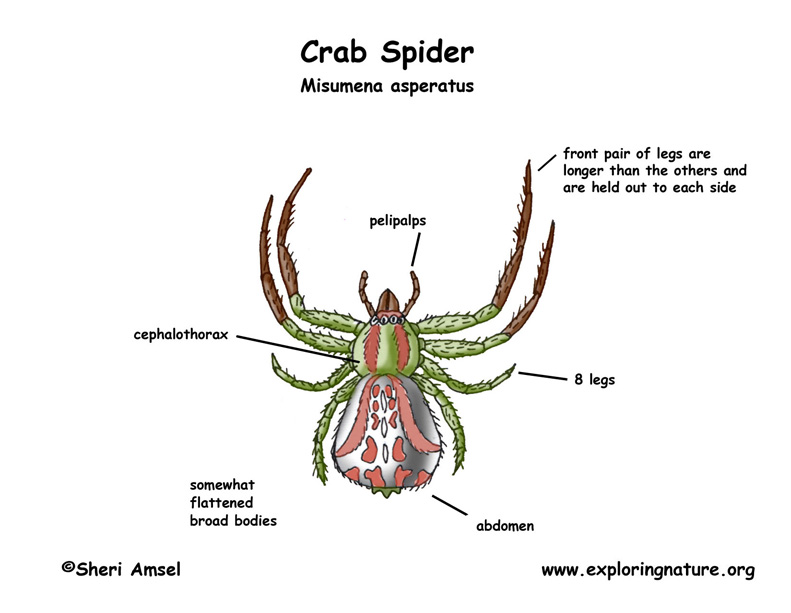

They are found worldwide.
They live on trees and flowers.
They look a little bit like a crab in that their front pair of legs are longer than the others and are held out to each side. The second pair of legs can be shorter and thicker. They have a flattened, broad body. They are can change color over time to match the flower where they wait for prey. They can move backwards, forwards, and sideways, like a crab.
They don’t make webs. They wander on the ground and over plants searching for prey. They will wait on flowers for insect coming to feed on nectar or pollen. They often take on the coloring of the place they wait for prey and are well camouflaged.
They eat insects, including butterflies, dragonflies and bees.
They do a courtship dance before mating. Then the female makes a silken egg sac, lays her eggs, and guards the nest until she dies, usually before the babies (spiderlings) hatch.
Kingdom: Animalia
Phylum: Arthropoda
Class: Arachnida
Order: Araneae
Suborder: Araneomorphae
Family: Thomisidae
Genus: Misumenops
Species: M. asperatus
When you research information you must cite the reference. Citing for websites is different from citing from books, magazines and periodicals. The style of citing shown here is from the MLA Style Citations (Modern Language Association).
When citing a WEBSITE the general format is as follows.
Author Last Name, First Name(s). "Title: Subtitle of Part of Web Page, if appropriate." Title: Subtitle: Section of Page if appropriate. Sponsoring/Publishing Agency, If Given. Additional significant descriptive information. Date of Electronic Publication or other Date, such as Last Updated. Day Month Year of access < URL >.
Amsel, Sheri. "Spider (Crab)" Exploring Nature Educational Resource ©2005-2024. December 13, 2024
< http://www.exploringnature.org/db/view/Spider-Crab >

